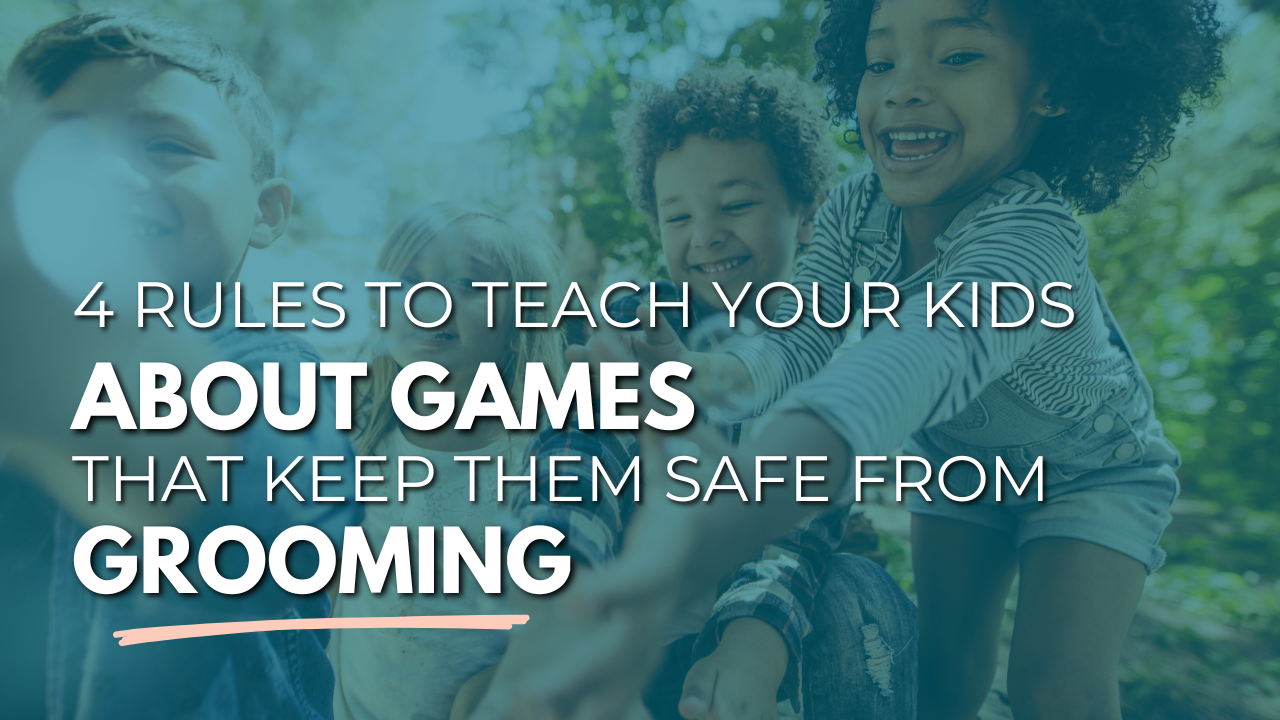The 4 Rules to Teach Kids About Games - that keep them safe from grooming
Nov 20, 2025
Why Teaching Kids About “Games” Matters More Than Ever
Most unsafe games don’t look unsafe. They start as fun, friendly, harmless… until something shifts.
Predators often disguise grooming as “play” - because games feel normal, familiar and exciting for children.
When kids understand the rules of safe games, they’re better equipped to recognise when something crosses the line and to tell a safe adult early.
Before We Talk About “Games,” Start With Body Safety Basics
The safest place to start is always body safety education. When children understand the rules of their bodies - correct names for private parts, what private means, the difference between safe and unsafe touch, and that they can always tell a safe adult - they are far better at recognising when a “game” isn’t really a game.
If you haven’t already introduced body safety at home, tools like the Conversations with Kids Body Safety Cards make it simple. They take the pressure off you, give kids the language they need, and make safety conversations part of everyday life instead of something scary or awkward.
Here are the four rules every child needs to know to stay safe.
Rule 1: Safe Games Feel Fun (Not Confusing or Uncomfortable)
Kids don’t need fear - they need body awareness.
Teach them that safe games feel:
✔ fun
✔ silly
✔ comfortable
If a game suddenly feels:
❌ weird
❌ uncomfortable
❌ embarrassing
❌ secretive
❌ “yucky in my tummy”
…that’s a sign something isn’t right.
Teach them:
“Your body is smart. If it doesn’t feel fun anymore, you can stop and tell me.”
Rule 2: Safe Games Aren’t Secrets
If someone says:
-
“Don’t tell anyone…”
-
“This game is just between us…”
-
“Other people won’t get it…”
-
“You’ll get in trouble if you tell…”
That is never a safe game.
Safe games can be talked about, shared and played with family and friends. Unsafe games hide in silence.
Rule 3: Body Safety Rules Still Apply (Always)
No game should ever involve:
❌ private parts
❌ touching under clothes
❌ kissing
❌ dares involving bodies
❌ “accidental” touches
❌ lap-sitting with no purpose
❌ tickling that doesn’t stop when they say stop
Safe games respect body boundaries - every single time.
Teach them:
“Private parts stay private - even in games.”
Rule 4: Everyone Gets a Choice (No Pressure, No Tricks)
Safe games are fair. Everyone chooses to play, and everyone can stop.
Red flags include:
-
pressure (“Come on, don’t be boring”)
-
bribing
-
guilt (“You’ll hurt my feelings”)
-
changing the rules to confuse the child
-
one person always being in control
-
someone not listening when the child says stop
Teach them:
“If someone doesn’t listen to your no, the game stops right away and you tell a safe adult.”
4 Questions Parents Can Ask to Check If a Game Is Safe
These quick questions make it easier to spot red flags without grilling your child:
-
Who did you play it with?
-
How did the game make you feel?
-
What were the rules?
-
Can anyone play this game or just certain people?
These questions help you understand the dynamics, the power balance and whether there’s anything unsafe happening.
Why Some Kids Are Targeted More - And How This Helps Protect Them
Children who are shy, eager to please, isolated, neurodivergent, or struggling socially are sometimes targeted more - not because they’re at fault, but because predators look for vulnerability, opportunity and silence.
Teaching kids these four rules gives them language, confidence, and clarity. When kids understand their rights and how to spot unsafe behaviour, they become much harder to manipulate.
Want help teaching body safety in a calm, simple way?
Inside the KidSafe Collective, you’ll find:
✔ body-safety scripts
✔ game conversation guides
✔ monthly online safety topics
✔ resources for tricky behaviours
✔ support from me whenever you need it
Join the KidSafe Collective → Give your kids the tools and yourself the confidence.
Kristi x


